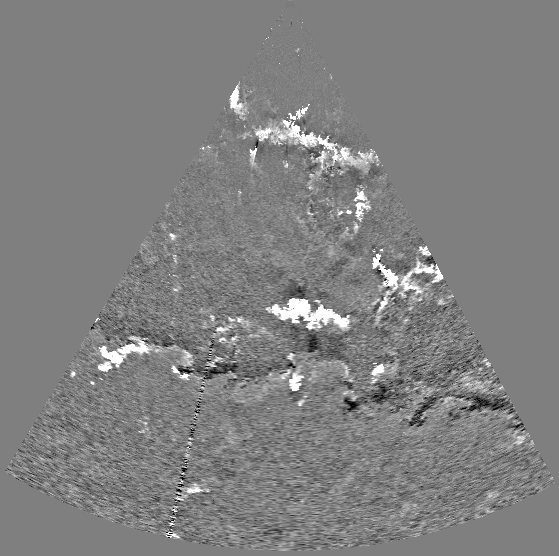Dense Motion Estimation from Lidar Data
This collaboration with Dr. Shane Mayor from the CSU Chico Athmospheric Lidar Research Group started early 2010.
Atmospheric scans from the Raman-Shifted Eye-safe Aerosol Lidar (REAL) have been processed with optical flow techniques (DenseMotion software) previously developed by the Fluminance team.

A sample of REAL horizontal atmospheric scan.

Example of estimated dense field - 26 April, 23:05:41. The close-up (bottom-left) shows two counter-rotating vortices situated near the northward moving density front; velocity vectors are superimposed every 6 px on the input frame. Up-right is vorticity map confirming the two vortices, bottom-right is the divergence map showing convergence north of the front.
References:
25th International Laser Radar Conference, 5-9 July 2010, St. Petersburg, Russia.
Results of the application of optical flow methods to eye-safe aerosol lidar images leading to dense velocity field estimations are presented. A fluid motion dedicated formulation is employed, taking into account the deforming shapes and changing brightness of flow visualization. The optical flow technique has the advantage of providing a vector at every pixel in the image, hence enabling access to improved multiscale properties. In order to assess the performances of the method, we compare vectors with punctual sonic anemometer measurements. Power spectra of the velocity data are also calculated to explore the spectral behavior of the technique.